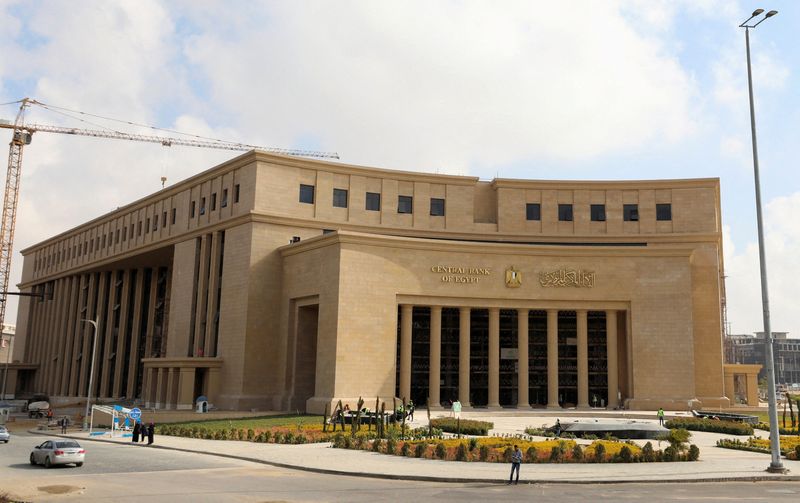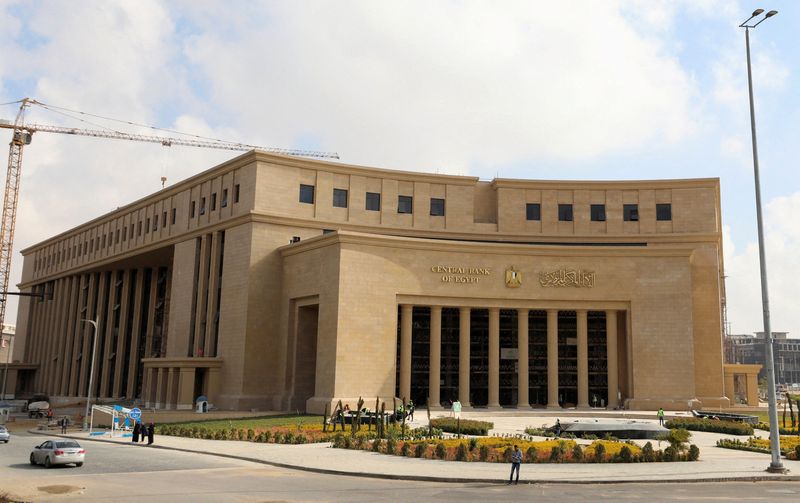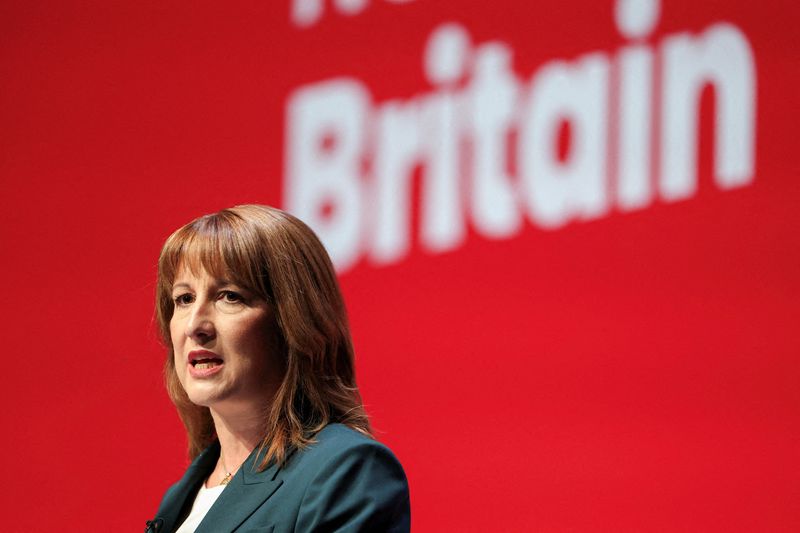Forex
Egypt lets pound plunge to record lows, closing in on IMF deal


© Reuters. FILE PHOTO: A general view of the new headquarters of the Central Bank of Egypt, at the New Administrative Capital (NAC) east of Cairo, Egypt, December 26, 2023. REUTERS/Mohamed Abd El Ghany/File Photo
2/2
By Nafisa Eltahir and Jana Choukeir
CAIRO/DUBAI (Reuters) -Egypt’s pound hit a record low on Wednesday after the central bank said it would let the currency trade freely and hiked rates by 600 basis points at an unscheduled meeting, taking steps to stabilise the economy with help from Gulf investment and IMF funds.
The currency weakened after the markets opened to beyond 50 pounds to the dollar from about 30.85 pounds, a level Egypt has for months tried to defend.
A more flexible exchange rate is a key demand of the International Monetary Fund, which officials have signalled is close to confirming an expansion of its current, $3 billion support programme with Egypt.
Analysts welcomed Wednesday’s steps, saying they paved the way for the deal with the fund.
The country’s state-linked Al Qahera News cited an unnamed, senior official as saying an agreement would be signed within hours.
Egypt has in the past said it would shift to a more flexible exchange rate, only to return to closely managing the currency whenever the pound weakened.
This time, it may be betting that hard currency inflows from investment projects including a $35 billion investment deal signed in late February with the United Arab Emirates will prevent a freefall.
Egypt has been suffering from a chronic shortage of foreign currency. The central bank said its actions were “backed by the steadfast support of multilateral and bilateral partners” and that “sufficient funding has been secured to avail foreign exchange liquidity”.
After the announcement, Egypt’s international bonds soared, with longer-dated bonds gaining around 4 cents before giving away some gains. By 1200 GMT, 2049 bond was up 2.3 cent at 83.25 cent, according to Tradeweb data.
The premium demanded by investors to hold Egypt’s international bonds over safe-haven U.S. Treasuries tightened to as little as 529 basis points, its lowest level since June 2021, according to JPMorgan
The central bank said it had raised the overnight lending rate to 28.25% and its overnight deposit rate to 27.25%, as part of a decision to accelerate monetary tightening and bring down inflation, which rose to record levels last year.
“To ensure a smooth transition, the CBE will continue to target inflation as its nominal anchor, allowing the exchange rate to be determined by market forces,” it said in a statement.
CLEARING BACKLOGS
The foreign currency shortage has curbed local business activity and led to backlogs at ports and delays in payments for commodities.
Remittances from Egyptians working abroad, the country’s top single source of foreign currency, have slowed sharply amid expectations that the pound would fall.
The war in Gaza and attacks by Houthis in Yemen on Red Sea shipping have put at risk receipts from tourism and Suez Canal traffic, two other key sources of hard currency.
“The unification of the exchange rate is crucial, as it facilitates the elimination of foreign exchange backlogs,” the central bank said.
Since early 2022, when the foreign currency shortage worsened, the pound has lost about half its value against the dollar in a series of staggered devaluations.
Though the central bank already had an inflation target, it also sought to manage the pound.
The announcement on Feb. 23 that Emirati sovereign fund ADQ will invest $24 billion in new money and convert $11 billion of existing deposits within two months for real estate development and other projects had eased pressure on the Egyptian pound on the black market ahead of the devaluation.
On currency markets, one-month non-deliverable forwards stood at around 50 to the dollar – in line with the spot rate – but 12-month contracts traded at just over 55 to the dollar, indicating the currency might have to adjust some more in the months ahead.
Another return to managing the exchange rate would limit the benefits of Wednesday’s decision, said Kaan Nazli, portfolio manager at Neuberger Berman.
“I guess the proof will be in the pudding, but there is a bigger chance than before thanks to the UAE funding,” he said.
Analysts say doubts remain over Egypt’s commitment to structural reforms that it has often put off, including reducing the state’s and the military’s sway over the economy.
Along with arrears to foreign companies, the country also faces a heavy foreign debt repayment schedule.
The banking system, including the central bank, had a net foreign asset deficit of 841 billion Egyptian pounds ($27.2 billion) as of Dec 31.

 Forex3 years ago
Forex3 years agoForex Today: the dollar is gaining strength amid gloomy sentiment at the start of the Fed’s week

 Forex3 years ago
Forex3 years agoUnbiased review of Pocket Option broker

 Forex3 years ago
Forex3 years agoDollar to pound sterling exchange rate today: Pound plummeted to its lowest since 1985

 Forex3 years ago
Forex3 years agoHow is the Australian dollar doing today?

 Cryptocurrency3 years ago
Cryptocurrency3 years agoWhat happened in the crypto market – current events today

 World3 years ago
World3 years agoWhy are modern video games an art form?

 Commodities3 years ago
Commodities3 years agoCopper continues to fall in price on expectations of lower demand in China

 Economy3 years ago
Economy3 years agoCrude oil tankers double in price due to EU anti-Russian sanctions
























